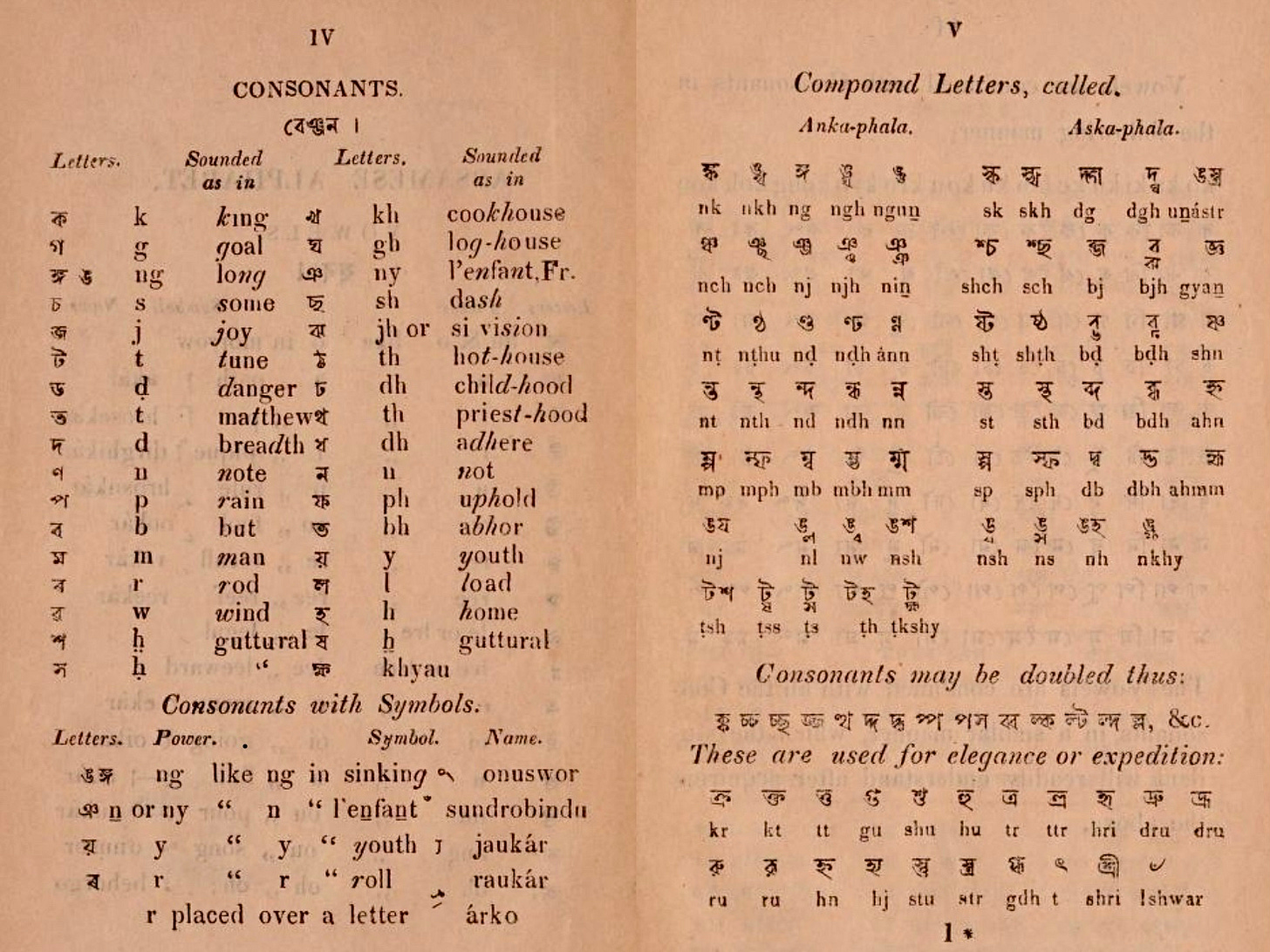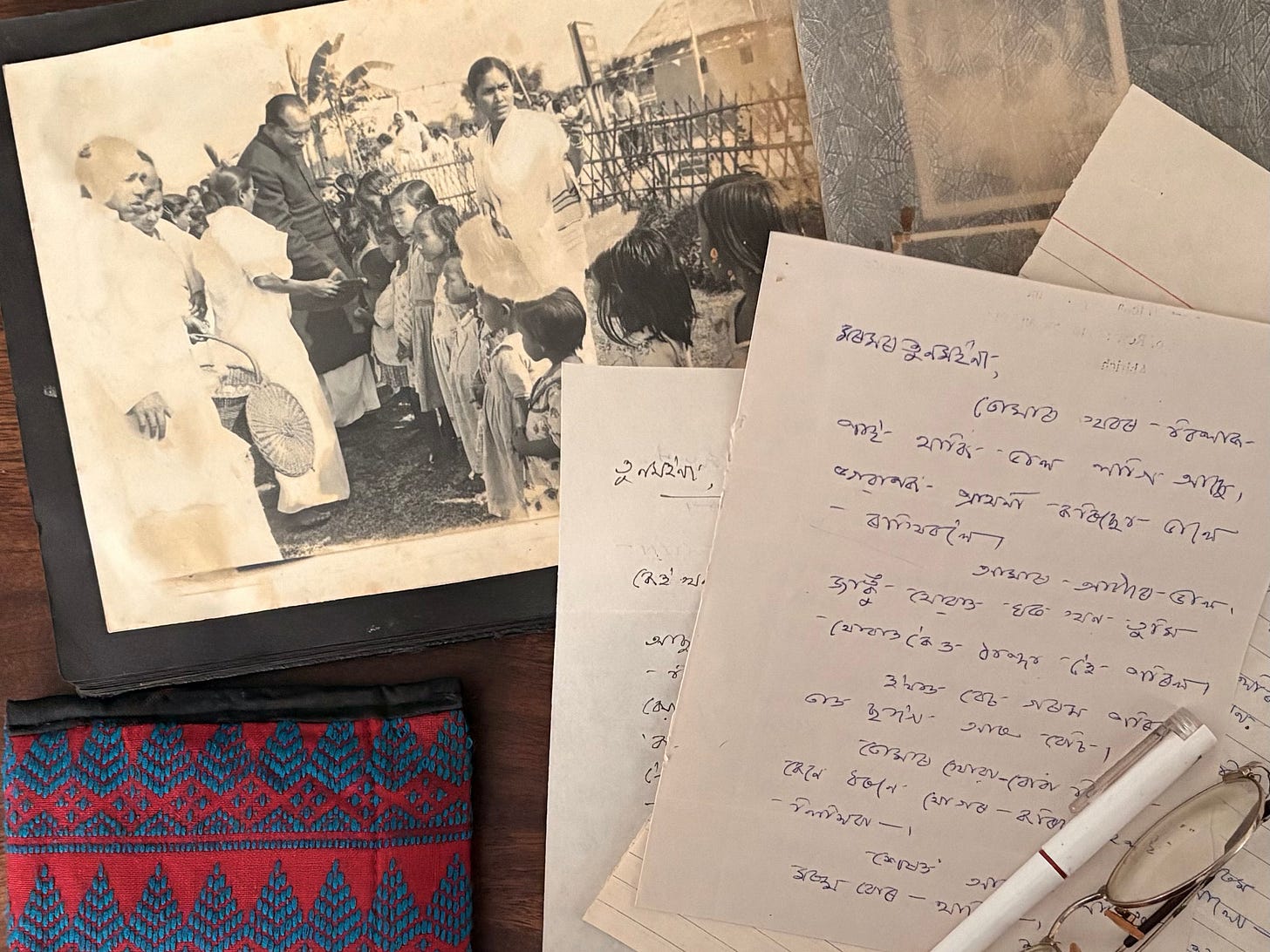Every language tells a story, but Assamese sounds like a poem, shaped by the waters of the Brahmaputra, the memories of its people, and the flowing of time.
Spoken across Assam, a culturally rich and diverse state in northeast India, Assamese is more than just a tool for communication. It is a vessel of memory, emotion, and daily ritual. Yet, in a nation teeming with linguistic diversity, regional languages like Assamese are sometimes at risk of being overshadowed. While Assamese has always carried the cultural and emotional essence of Assam, its presence in public spaces, education, and media has often been underrepresented.
To speak Assamese is to step into a lineage of music, meaning, and memory—a heritage carried forward one syllable at a time.

The Power of Language: Beyond Words
In every language, there exists a quiet power, a connection between the personal and the universal. Language is more than a tool for communication. It is the fabric of culture, linking generations and carrying the emotions, traditions, and histories of the people who speak it. To learn a language, to teach it, is to step into a deeper conversation that stretches across time, reaching back to a history that precedes us and forward into a future we shape together.
Writing about Assamese should have been easy for me because it’s the language I’ve spoken all my life. But capturing something so deeply embedded in your bones is difficult. There was no “introduction” to Assamese—it has always been there. It is the language of scoldings and lullabies, of comfort and love, of my home, my family, and the world beyond.
Some stories are easy to tell: a piece of jewelry gleams on your wrist, a festival bursts with sounds. But a language? It lives inside your mouth, your memory, your essence. It’s heard more than seen, felt more than understood. Assamese isn’t a single, fixed way of speaking. It shifts with the speaker, the place, the context. In indigenous communities, it carries its own unique rhythms. Dialects overlap, blend, contradict, but coexist.
A Living Thread in a Diverse Land
Assam is home to a diverse range of communities, each contributing to its rich cultural mosaic. The earliest indigenous tribes like the Bodo and Mising, long predating the Ahoms in the 13th century, form the deep roots of the land. Over the decades, waves of migrants, including Bengalis, Biharis, Punjabis, and Marwaris, have shaped Assam into the vibrant, multicultural state that it is today. For them, and others, their native languages, such as Bengali, Hindi, Punjabi, and Rajasthani, are spoken at home, shaping their daily lives and cultural expressions. Festivals and food traditions remain distinct, celebrated with fervor within each community. Yet, Assamese functions as common ground in public spaces and shared social life. It is the language that bridges gaps from marketplaces to government offices, spaces where people of different linguistic backgrounds come together.
The question of who is “Assamese” often stirs political debate, but the language itself offers a simpler, quieter truth: it’s a thread of shared identity, connecting people to their land, their history, and one another.
The Birth of Orunodoi: A Turning Point in Assamese Journalism
In 1846, in the town of Sivasagar, the Orunodoi was born, a quiet revolution in the history of Assamese. Published by the American Baptist Missionary Press, it was not just a newspaper but a lifeline during a time when educational resources were few. Focused on religion, science, and general knowledge, Orunodoi bridged the gap between distant Western ideas and the everyday lives of Assamese people. Beyond its religious messages, it gave the Assamese language a voice in the world of print, a space where it could be nurtured and preserved. While the paper’s ties to colonial missionaries were often met with criticism, it also planted the seeds for a deeper connection to Assamese culture, bringing forth conversations about social issues, the importance of education, and the very language itself. Through those pages, Assamese found not just a medium of communication but a reflection of its own resilience and identity, ensuring that, even in the changing tides of colonial rule, the heart of Assam would continue to beat strong.
Language as Memory and Emotion
For many Assamese speakers, the language is not just familiar. It is deeply intimate, rooted in memory and emotion. It holds the warmth of lullabies, the wisdom of proverbs, the comfort of prayers, and the reprimands of childhood. A simple word like “ahisu”—meaning “I am coming”—carries a resonance that feels different in Assamese. It speaks not just of arrival but of presence, an intimate connection between people that transcends the moment.
In Assamese, there is no direct word for “goodbye.” Instead, we part with “ahisu,” which carries the promise of return and the hope that relationships are never truly severed. It suggests a continuity, a bond that remains, even when distance intervenes.
Here’s a poem by Sandeep Chetia, titled aahisu, which captures this sentiment beautifully:
aahisu
my mother tongue lacks
the word for good-bye.
in my homeland
when we bid farewell
we say ahisu with all the
hope
inside us.
aahisu, I’m coming
aahisu, I’m coming with hope
aahisu, wait for me
in my homeland
we hope
with all the love inside us
that
farewells are never enduring
and that people we love
come meet us again.A Language Shaped by Saints and Writers
Assamese has long been a literary and devotional language, shaped by cultural figures. In the 15th century, the saint-poet Srimanta Sankardev composed borgeets, devotional songs sung communally in Namghars, along with plays, philosophical writings, and spiritual texts. Sankardev’s contributions were transformative, elevating Assamese to a medium of spiritual and intellectual expression, uniting diverse communities through shared rituals and language. These works were not just hymns or performances but a means of social cohesion, bringing people together in collective spiritual experience.
Later, writers like Hemchandra Barua, Lakshminath Bezbarua, and Birinchi Kumar Barua helped shape modern Assamese prose through satire, essays, fables, and personal narratives. Their work didn’t merely entertain but also built Assamese into a literary language with moral and cultural backbone. The legacy of Assamese as a language of both devotion and intellect has continued into modern times, where contemporary writers use it as a lens through which to explore social, cultural, and emotional realities.
Many Voices, One Language
One of the greatest strengths of Assamese lies in its diversity. It speaks differently in every corner of Assam, not just geographically, but culturally. In Guwahati, it is quick, often peppered with borrowed words, while in the villages of Barpeta or Jorhat, it becomes slower, more melodic, laden with idioms. Yet, this variation is not fragmentation, but harmony. Each dialect, whether in indigenous communities, tea estates, or along the Brahmaputra, adds its unique layer to a language that never feels stagnant but continually evolves. It is a testament to the language’s power to adapt while remaining true to its roots.
The Assamese Script: Where Sound Meets Symbol

If you look at the image of the Assamese alphabet, you will see the individual characters that make up this intricate and rich script. Each syllable, each character, is more than just a sound or a letter. It is a living thread in the fabric of Assam’s cultural identity, linking the past to the present with every word we speak.
The Assamese script is more than just a system of writing. It is a visual embodiment of the language’s musicality. Its origins trace back to the ancient Brahmi script, from which it evolved into the Eastern Nagari family of scripts, including Assamese. While the modern script has its own melodic logic, it retains features rooted in this ancient tradition. Each character usually represents a syllable—a consonant with a built-in vowel. So the character ক reads as “ka.” To change the vowel, you add visual accents: lines to make it “ki” (কি) or a curling hook for “ko” (কো). These accents are not just grammatical; they shape the musicality of the language.
In speech, there is a rough, breathy sound made by pushing air through the back of the mouth, like the “ch” or “kh” you hear in languages such as German, as in the word Bach. While many modern Indo-Aryan languages have lost this sound over time, Assamese has managed to preserve it. This feature gives Assamese its unique sound and historical depth. For instance, words like “খবৰ” (khobor, meaning news) and “ঘৰ” (ghor, meaning house) showcase this rough, breathy sound. This preservation highlights the way languages evolve in different ways, shaped by historical, geographical, and social influences. Thus, Assamese serves as a living example of how languages can preserve such sounds, offering linguists valuable insights into the diversity of language evolution.
In addition to preserving unique sounds, Assamese also has an interesting quirk in how its speakers incorporate English into their daily lives. When learning English, speakers often adapt English sounds to fit their native phonetic patterns. It is a natural result of how Assamese handles sounds differently from English.
Take, for example, the “s” sound in “school.” In English, the tongue is closer to the front of the mouth when making the “s” sound. But in Assamese, many speakers make the “s” sound further back in the mouth, which can result in a pronunciation closer to “iskool.” As a native Assamese speaker, I often switch between “iskool” and “school” depending on which language I am speaking or whether I am interacting in Assamese with someone from a small village or a city.
In English, “you” is used universally, regardless of age or relationship. In Assamese, however, apuni carries more weight. It’s a respectful term that shows deference to the person being addressed, whether a stranger, elder, or teacher. Unlike the simple English “you,” apuni reflects a cultural emphasis on respect and hierarchy. Similar to how French or Spanish use formal pronouns (like “vous” or “usted”) to show respect, apuni in Assamese also acknowledges someone’s social role and position. It is a reminder that in Assamese, language is not just communication, but also a way to honor and connect with others.
The Personal Connection: A Letter from My Mother

For me, Assamese is more than just a language; it is deeply intertwined with my sense of self. One of my most cherished memories of my late mother is a brief letter she wrote. It wasn’t a formal letter, but one filled with the warmth of everyday moments. The flow of the language, the rhythm of each word, captured the essence of her presence. I keep a few of these letters not only for their content but also as a poignant reminder of the times when distance separated me from her. Now, her presence is only a memory. The letters also serve as a physical connection to the language, a bridge to the emotions and memories of my roots.
The Influence of My Father’s Work
A book by my late father interpreted the Bhakti Mongol Gukha, a devotional text by 15th-century saint Anirudhadev, into simple Assamese as a way to make this rich devotional text accessible to all. The text, revered for its teachings on devotion to God, serves as a philosophical guide that bridges the ancient wisdom of Assam’s bhakti (devotion) tradition with everyday life. My father’s interpretation went beyond a mere translation of words; it ensured that the essence of the language and its teachings could be understood by everyone, regardless of background or education. Much like the language itself, this work connects the past with the present, bringing the wisdom of saints and poets into the everyday lives of the people.
Why Assamese Matters
In a world where many languages are under threat, the survival of Assamese is not just about words or numbers. It is about preserving a worldview that can only be expressed through its unique lexicon. As long as it is spoken in the homes of its people and used in daily life, whether in storytelling, prayer, or conversation, it will remain a living part of the land itself. In our globalized world, languages like Assamese are crucial for preserving ways of thinking, being, and the stories that shape who we are. Let’s cherish these languages as living bridges connecting the past, present, and future.
For those who grew up speaking Assamese, the language is like the Brahmaputra River that winds through the land: sometimes quiet, sometimes fierce, always essential. If you’ve never heard it spoken, I hope this story gives you a glimpse. If you grew up with it but rarely use it, maybe it calls you back. And if you’re just discovering it for the first time, welcome!
I hope this story has helped you see the beauty and importance of the Assamese language, not just as a tool for communication, but as a vital thread that connects the people and culture of Assam. If you have any thoughts or questions, I’d love to hear from you.
If you found this post interesting, consider sharing it with friends or family who might appreciate the richness of Assam’s language and heritage.
I’ll be back in two weeks with more stories from Assam’s vibrant culture. Until then, take care, celebrate the languages that bind us, and cherish the power of words that carry our history forward.



Interlude is absolutely beautiful in content, expression, and voice. I call it "gentle eloquence." Touching. Thanks for showing us our other home. This makes me think of a quote attributed to Jefferson (though the source is apocryphal, I think), " Every man has two countries--his own and France." Interlude and the entire post make me add to "his own and France," Assam.
Hi Munindra... I am beginning to learn so much about Assam through you, culture, language etc